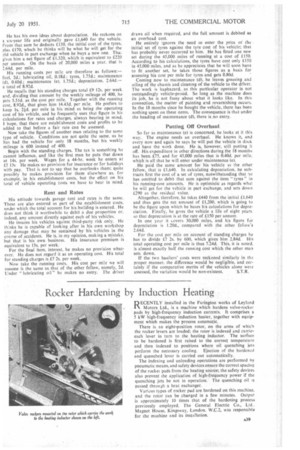Rocker Hardening by Induction Heating
Page 57

If you've noticed an error in this article please click here to report it so we can fix it.
REC ENTLY installed in the Farington works of Leyland Motors Ltd., is a machine which hardens valve-rocket pads by high-frequency induction currents. It comprises a 5 kW high-frequency induction heater, together with equipment which makes the process automatic.
There is an eight-position rotor, on the arms of which the rocker levers are loaded; the rotor is indexed and carriea each lever in turn to the heating inductor. The surface to be hardened is first raised to the correct temperature and then indexed to positions where oil quenching jets perform the necessary cooling. Ejection of the hardened and quenched lever is carried out automatically.
The indexing and unloading operations are performed hy pneumatic means, and safety devices ensure the correct spacing of the rocker pads from the heating source; the safety devices also prevent the application of high-frequency power if the quenching jets be not in operation. The quenching oil is passed through a heat exchanger.
Various types of rocker pad are hardened on this machine, and the rotor can be changed in a few minutes. Output is approximately 10 times that of the hardening process previously employed. The General Electric Co., Ltd., Magnet House, Kingsway, London. W.C.2, was responsible for the machine and its installation.




















































































